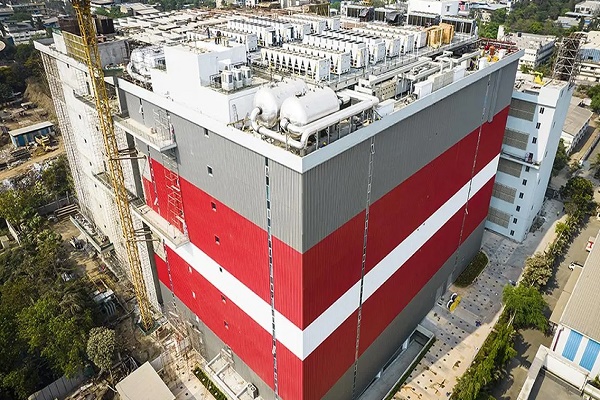Crudeoil trading range for the day is 5602-5910 - Kedia Advisory

Gold
Gold prices dipped by -0.56% to settle at 74,482 as the dollar strengthened following data showing persistent inflationary pressures in the U.S. The Consumer Price Index (CPI) increased by 0.2% in October, aligning with expectations, marking a similar pace to September's rise. Headline inflation on an annual basis rose to 2.6% from the prior month's 2.4%, while core inflation held steady at 3.3%. Minneapolis Federal Reserve Bank President Neel Kashkari voiced confidence that inflation is gradually decreasing, noting the decline in goods inflation and slower wage growth as supportive indicators. In India, demand for gold weakened as buyers delayed purchases after a spike in festival sales, with premiums reaching $3 over official domestic prices. Meanwhile, China’s central bank refrained from gold purchases for a sixth consecutive month, leading to dealer discounts of $15-$17 per ounce, up from $11-$14 in the prior week. Japanese and Singaporean markets saw slight premiums due to stable interest in bullion. According to the World Gold Council (WGC), global gold demand, excluding OTC trading, remained steady at 1,176.5 metric tons in the third quarter. A 5% rise in total demand was driven by increased investment, particularly from professional and high-net-worth investors, despite a 12% decline in jewelry demand and a 49% reduction in central bank purchases. Technically, gold remains under selling pressure, with open interest rising by 0.36% to settle at 10,388 as prices fell by 419. Support is seen at 74,110, and resistance is likely at 75,090, with potential further testing at 75,695 if upward momentum resumes.
Trading Ideas:
* Gold trading range for the day is 73735-75695.
* Gold dropped as the dollar recovered after data showed inflationary pressures remain persistent.
* The Consumer Price Index (CPI) rose 0.2% last month after September’s 0.2% rise.
* Fed's Kashkari says he's confident inflation is headed down
Silver
Silver prices fell by 0.15% to close at 89,197, pressured by a stronger U.S. dollar and elevated bond yields, as October’s U.S. inflation data aligned with expectations. Headline inflation held at 2.6%, and core inflation remained steady at 3.3%, reinforcing market expectations of a 25 basis-point rate cut by the Federal Reserve at its final decision for the year. Richmond Fed President Thomas Barkin expressed confidence in the current state of the economy, noting a robust yet selective consumer base and a productive labor force. Barkin’s remarks followed the Fed’s recent rate cut, which brought the policy rate to a range of 4.50%-4.75% as the central bank adjusted its approach to "somewhat less restrictive levels." The global silver market is set for a fourth year of deficit, with a shortfall expected to reach 182 million ounces in 2024, the Silver Institute reported. Industrial demand, supported by sectors like electronics, electric vehicles, and solar panels, is projected to reach 1.21 billion ounces despite a 16% decline in physical investment. Mine supply is expected to increase by 1%, with higher output from Mexico, Chile, and the U.S. Silver imports surged, reaching 4,554 tons in the first half of 2024, almost doubling last year’s imports due to high demand from the solar and electronics industries and investor interest. Technically, silver is experiencing long liquidation, with a 1.22% drop in open interest, now at 22,833 contracts. Support is established at 88,530, with a further test down to 87,870 if breached. Resistance is positioned at 90,200, and a break above this level could see prices testing 91,210, indicating cautious sentiment amid industrial demand and global supply dynamics.
Trading Ideas:
* Silver trading range for the day is 87870-91210.
* Silver weighed down by a stronger dollar on news that October U.S. consumer prices increased as expected.
* Fed's Waller says private sector should lead on payment system innovation
* Higher silver supply to reduce global deficit by 4% in 2024
Crude oil
Crude oil prices edged up by 0.35% to close at 5,796 due to short covering, following an earlier decline driven by demand concerns and OPEC’s lowered growth forecasts for 2024 and 2025. OPEC revised its global oil demand outlook downward for the fourth consecutive time, citing weaker economic activity in China, India, and other regions. China’s fiscal spending announcements fell short of market expectations, adding to the pessimistic sentiment amid soft inflation data. U.S. oil inventories rose more than anticipated, with a 2.149 million-barrel increase reported by the EIA for the week ending November 1, surpassing market expectations of a 1.8 million-barrel rise. Cushing hub stocks also grew by 0.522 million barrels, and gasoline stocks saw an unexpected increase of 0.412 million barrels, against expectations of a 1.2 million decrease. Distillate stockpiles, which include diesel and heating oil, climbed by 2.947 million barrels, defying projections of a 1 million-barrel drop. In its latest outlook, the U.S. EIA projected lower global oil demand growth of 1.2 million barrels per day (bpd) to reach 104.3 million bpd in 2025, approximately 300,000 bpd below prior estimates, due to slowing economic growth in China and North America. The EIA also adjusted its U.S. production forecast, now expecting 13.22 million bpd in 2024, slightly below its previous forecast. Technically, the crude oil market is experiencing short covering, with open interest declining by -3.42% to settle at 12,373 as prices rose by 20. Support is currently at 5,699, with further downside potential at 5,602, while resistance is anticipated at 5,853, with a move above possibly testing 5,910.
Trading Ideas:
* Crudeoil trading range for the day is 5602-5910.
* Crude oil gains on short covering after prices dropped amid OPEC lowered global oil demand growth forecasts for 2024 and 2025
* OPEC said world oil demand will rise by 1.82 mbpd in 2024, down from growth of 1.93 mbpd it expected last month.
* Iran ready for possible oil export curbs after Trump win
Natural gas
Natural gas prices rose by 1.66%, closing at 250.6, driven by forecasts of colder weather later in November, which could increase demand for heating. This rise in price is also supported by a recent dip in daily gas output, now averaging 100.1 billion cubic feet per day (bcfd) in November, down from October’s 101.3 bcfd. Despite this, production saw a short-term increase, reaching 99.7 bcfd on Wednesday, up from a nine-month low of 98.4 bcfd. Meteorologists forecast warmer-than-normal temperatures in the Lower 48 states through November 20, followed by near-normal weather from November 21-28. This anticipated colder turn has led to higher projections in demand, with average gas demand, including exports, expected to rise from 107.8 bcfd this week to 109.3 bcfd next week. The U.S. Energy Information Administration (EIA) anticipates a decrease in natural gas production in 2024 to 103.5 bcfd, from 2023’s record 103.8 bcfd, as some producers cut back on drilling after low spot prices earlier in the year. However, the EIA forecasts an increase in liquefied natural gas (LNG) exports, with volumes expected to reach 12.1 bcfd in 2024 and 13.8 bcfd in 2025. The latest storage data showed that U.S. utilities added 69 billion cubic feet to reach 3.932 trillion cubic feet, exceeding expectations, with stocks 157 billion cubic feet above last year and 215 billion cubic feet above the five-year average. Technically, the market is under short covering, as indicated by a 0.84% decline in open interest, now at 18,344 contracts. Natural gas finds support at 241.9, with further downside testing possible at 233.2. Resistance is likely at 256.6, with a potential test of 262.6 if prices move higher, reflecting cautious optimism amid weather-driven demand and storage trends.
Trading Ideas:
* Naturalgas trading range for the day is 233.2-262.6.
* Natural gas gains driven by forecasts of colder weather in late November, which are expected to increase gas withdrawals for heating.
* Utilities likely added more gas to storage last week than usual for four weeks in a row.
* Average gas output in the Lower 48 U.S. states slid to 100.1 bcfd so far in November, down from 101.3 bcfd in October.
Copper
Copper prices fell by -0.7% to close at 799.95, pressured by a stronger dollar and subdued demand prospects in China. Investor sentiment has been cautious amid concerns over the U.S.-China trade outlook and China's recent stimulus measures, which were smaller than anticipated. In Chile, state-owned copper giant Codelco raised its production by 5.2% year-on-year in September, totaling 123,100 metric tons, although output at BHP’s Escondida mine, the world’s largest, dropped by 5.4% to 101,500 tons. Meanwhile, Collahuasi mine, co-owned by Glencore and Anglo American, reported a significant production increase of 14% to 51,400 tons. The global refined copper market saw a 54,000 metric tons surplus in August, down from a 73,000 metric tons surplus in July, according to the International Copper Study Group (ICSG). Year-to-date, the market has shown a 535,000 metric tons surplus, reflecting weaker-than-expected demand. China’s imports of unwrought copper rose by 1.1% in October year-on-year, reaching 506,000 metric tons, supported by seasonal demand. However, the premium for copper delivered to Yangshan warehouses recently fell from $69 per ton to $48, indicating softening import appetite. For the year’s first ten months, copper imports increased by 2.4% to 4.6 million tons, while domestic refined copper production rose by 5.4% to 10.04 million tons. On the technical front, copper remains under selling pressure as open interest rose by 2.69% to 8,739 contracts, while prices declined by 5.65. Immediate support is seen at 796.3, with a further drop potentially testing 792.7, while resistance lies at 805.5, with an upward move possibly reaching 811.1.
Trading Ideas:
* Copper trading range for the day is 792.7-811.1.
* Copper prices edged lower tracking a stronger dollar and muted demand prospects in China.
* Adding to investor disappointment was the scale of China's recent stimulus measures to reboot its lacklustre economy.
* Chile's state-run copper giant increased production by 5.2% year-on-year in September for a total of 123,100 metric tons
Zinc
Zinc prices rose by 0.49%, closing at 277.2, on short covering after pressure seen amid demand concerns in China and a limited impact from the recent debt package aimed at economic recovery. Investors had hoped for stronger, direct economic stimulus from China, while uncertainties about potential tariffs from a second Trump administration have further clouded demand prospects. The U.S. dollar remains strong, bolstered by expectations of growth-driven and inflationary policies under Trump, creating additional pressure on zinc demand from non-U.S. buyers. Inventory data shows that zinc ingot stock in China’s seven main regions totaled 120,000 metric tons, reflecting a weekly increase of 1,100 metric tons. Shanghai's inventories decreased slightly due to lower warehouse arrivals and downstream enterprises seizing low-price opportunities. In Guangdong, however, inventories rose due to increased weekly arrivals. Globally, the zinc market’s deficit widened to 66,300 metric tons in August from 51,000 metric tons in July, signaling ongoing supply tightness. For the year so far, there’s been a surplus of 127,000 metric tons, significantly lower than last year's 418,000 metric tons. China’s refined zinc production in September grew over 2% from August but was still down 8% year-on-year. Production is anticipated to rise modestly in October as smelters, especially in Inner Mongolia, Shaanxi, and Hunan, ramp up post-maintenance operations, although some areas like Gansu are seeing reductions due to routine maintenance. Technically, zinc is experiencing short covering, as open interest fell by 8.73%, settling at 2,696 contracts. Support is seen at 273.2, with a potential test at 269.2 if prices move lower. Resistance stands at 280, and a breakout above this level could lead to further gains, potentially testing 282.8, signaling a cautious yet positive outlook amid inventory and production dynamics.
Trading Ideas:
* Zinc trading range for the day is 269.2-282.8.
* Zinc recovered on short covering after prices dropped as China debt package fell short of expecation.
* Additionally, fears that the incoming Trump administration may impose further tariffs on China have added to concerns over demand.
* Zinc ingot inventory in seven regions was 120,000 mt, an increase of 1,100 mt compared to October 31.
Aluminum
Aluminum prices declined by -0.46% to close at 236.05 as China's latest fiscal measures, including 6 trillion yuan in incremental debt financing, fell short of market expectations, limiting the anticipated economic boost. Despite low domestic aluminum ingot inventories remaining below 600,000 metric tons, improvements in transportation in northwestern China led to a shift in the continuous destocking trend, signaling a potential inventory inflection point and gradually reducing low-inventory support for aluminum prices. On the supply side, alumina markets have seen tight spot supplies due to production cuts and suspensions, though recent significant price fluctuations have somewhat tempered market sentiment. This has led to high-level adjustments in alumina prices, impacting cost dynamics for aluminum producers. Meanwhile, aluminum stocks at three major Japanese ports decreased by 0.5% to 311,400 metric tons by the end of October, signaling consistent demand. China's aluminum exports saw significant growth, with exports of unwrought aluminum and aluminum products reaching nearly 5.5 million tons in the first ten months of 2024, marking a 17% year-on-year increase. In October, exports rose by 2.7% month-on-month and by 31% year-on-year, underscoring China’s strong position in the global aluminum market. Domestic production in September increased by 1.2% year-on-year to 3.65 million tons, driven by steady demand and profitable margins, with daily output averaging 121,667 tons. Technically, aluminum is experiencing long liquidation, with open interest falling by 6.32% to settle at 2,814 contracts as prices dipped by 1.1. Immediate support is at 234.7, with further downside at 233.3, while resistance lies at 237.6, with a potential test of 239.1 if upward momentum develops.
Trading Ideas:
* Aluminium trading range for the day is 233.3-239.1.
* Aluminium dropped as the first round of China’s fiscal measures was relatively lower than expected
* Aluminium stocks at three major Japanese ports fell about 0.5% from the previous month.
* Domestic aluminum ingot inventory remained below 600,000 mt during the week.
Cotton candy
Cotton candy prices declined by -0.54% to close at 55,380 as weak demand in yarn markets and payment constraints weighed on sentiment. India's cotton production for 2024/25 is projected to drop by 7.4% to 30.2 million bales due to a smaller planted area and excessive rainfall that has impacted crop quality. The USDA recently lowered its forecast for India’s cotton production to 30.72 million bales and reduced ending stocks to 12.38 million bales, reflecting crop damage from heavy rains and pest issues. However, global cotton production is expected to increase, with higher yields in China, Brazil, and Argentina offsetting declines in the U.S. and Spain. India’s cotton acreage for the current kharif season has also fallen by approximately 9% to 11.29 million hectares, as farmers in Gujarat opted for groundnuts, which offered better returns. Consequently, India’s cotton imports are projected to rise to 2.5 million bales, while exports are expected to decline to 1.8 million bales due to lower domestic output. Domestic demand for cotton is likely to remain steady at last year’s level of 31.3 million bales. The U.S. cotton outlook for 2024/25 shows lower production and exports, with damage from Hurricane Helene contributing to a reduced forecast of 14.2 million bales. Global cotton production estimates were raised slightly, while world trade projections fell due to reduced imports from China. Technically, cotton candy is in long liquidation, with a 2.37% drop in open interest to settle at 165 as prices dipped by 300. Immediate support is at 55,080, with further downside potential at 54,790, while resistance lies at 55,630, with a move above potentially testing 55,890.
Trading Ideas:
* Cottoncandy trading range for the day is 54790-55890.
* Cotton settled down as yarn markets face weak demand and payment constraints.
* India's cotton production estimated to drop to 7-year low in 2024-25
* USDA has lowered India's cotton production forecast for the 2024-25 season to 30.72 million bales
* In Rajkot, a major spot market, the price ended at 26166.5 Rupees dropped by -0.07 percent.
Turmeric
Turmeric prices rose by 0.65% to settle at 13,336 due to short covering, even as a rise in arrivals and subdued demand put pressure on prices. The upcoming season's acreage is estimated to be 30-35% higher than last year, which could lead to a significant production increase. However, the downside was limited by reports of crop damage from heavy rains, suggesting that losses may exceed earlier estimates. Favorable weather conditions, including dry spells followed by light rains, have supported crop growth, with Vidarbha and Telangana regions receiving 20 mm and 18 mm of rain, respectively. While increased sowing across regions like Erode, Maharashtra, Telangana, and Andhra Pradesh could add to supply, the adverse weather may offset these gains, potentially pushing prices up in the coming months. Export dynamics reveal a 6.46% decline in turmeric exports during April-August 2024, totaling 77,584.70 tonnes, compared to the same period in 2023. Despite this, August 2024 saw a monthly rise of 5.72% in exports from July, totaling 15,974.87 tonnes, and a year-over-year increase of 41.09%. Meanwhile, imports surged by 340.21% year-over-year for the April-August period to 14,073.83 tonnes. Notably, imports declined by 40.73% from July to August, while showing a 60.80% year-over-year rise in August 2024. Technically, turmeric is under fresh buying pressure, as reflected in a 1.18% increase in open interest, now totaling 11,170 contracts. Support is observed at 13,102, with further downside testing possible at 12,866 if breached. Resistance stands at 13,502, and a break above this level could push prices toward 13,666, suggesting an outlook balanced between ample supply and potential demand recovery.
Trading Ideas:
* Turmeric trading range for the day is 12866-13666.
* Turmeric gains on short covering after prices dropped due to lower demand amid a rise in arrivals.
* The expected acreage for the upcoming season is estimated to be 30-35% higher than last year.
* Recent weather conditions, which include dry weather followed by light rains, are benefiting crop growth.
* In Nizamabad, a major spot market, the price ended at 13602.8 Rupees dropped by -0.6 percent.
Jeera
Jeera prices rose by 0.68% to close at 25,105 on short covering as arrivals increased, with approximately 15,000 bags arriving daily in Unjha. Farmers are estimated to hold around 35% of the season's stock, and the carryover stock for the new season is pegged at 20 lakh bags. Post-Diwali, an improvement in the export demand for jeera is anticipated, with exports likely to increase in November and December. Production is expected to decline by 10%, and the area under jeera cultivation in Rajasthan may decrease by 10-15%, further supporting prices. India's jeera market is currently competitive globally, with prices at $3,050 per tonne, cheaper than Chinese cumin by $200-$250. Increased demand from several countries, including China, favors the Indian market, as India is the only viable option for reasonably priced cumin. Middle East tensions have also spurred demand from the region, with Gujarat exporters benefiting significantly. According to the Federation of Indian Spice Stakeholders (FISS), jeera exports surged 128% year-on-year to 52,022 MT for July-September, driven by Middle Eastern demand. Exports during April-August 2024 rose by 61.44% to 103,614.46 MT compared to the same period in 2023, highlighting strong international demand. In Unjha, a major spot market, jeera prices dropped slightly to 25,149.55, down by 0.16%. Technically, jeera is under fresh buying, with open interest up by 5.46% to 2,145 contracts as prices gained 170. Immediate support is seen at 24,810, with further downside at 24,510, while resistance is positioned at 25,350, with a potential move to 25,590 if upward momentum continues.
Trading Ideas:
* Jeera trading range for the day is 24510-25590.
* Jeera gains on short covering after prices dropped as arrival has increased.
* There is a possibility of 25 percent reduction in cumin sowing in Gujarat
* Carryover stock of 20 lakh bags of cumin is estimated in the new season
* In Unjha, a major spot market, the price ended at 25149.55 Rupees dropped by -0.16 percent.
Views express by all participants are for information & academic purpose only. Kindly read disclaimer before referring below views






















